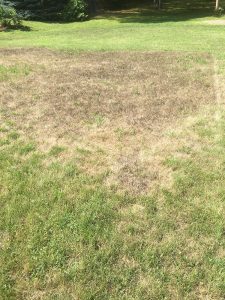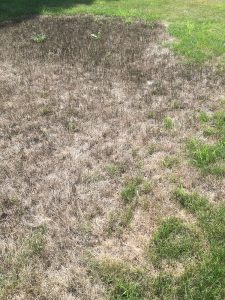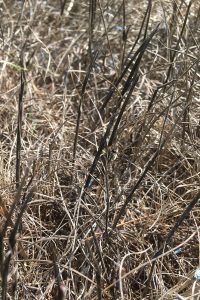“Black Lawn”
By Alicyn Smart, Plant Pathologist & Director of the Plant Disease Diagnostic Laboratory, University of Maine Cooperative Extension
July 8, 2020
Question: My grass has turned black in some areas. What is the cause of this?
Answer: Many lawns across Maine have experienced these same symptoms. The reason for this is due to a fungal disease that infects lawns that are stressed. The lack of rain in June has caused lawns that are not watered to become stressed and provided an opportunity for this fungal disease to become an issue. Reseeding the area and watering the grass when we are experiencing a drought will limit this from happening again. It is not necessary to apply any pesticide to the lawn.
In the last week, we have received dozens of questions from homeowners and landscapers about black areas in lawns across Maine. The University of Maine Plant Disease Diagnostic Lab has said this is due to a fungal disease called Cladosporium sp., and the black you are seeing is the fungus growing on the grass. The reason for this widespread disease is due to the dry weather we experienced in June, resulting in the grass becoming stressed. This fungal disease is only problematic when lawns are stressed, which is why it became an issue.
A healthy lawn will not struggle with this disease, so to limit the spread, water the lawn if we experience another dry period. In the areas where the grass is black, the area must be seeded since this grass is dead.
Additional Resources
To learn about the correct way to seed a lawn, see Bulletin #2367, Establishing a Home Lawn in Maine. Also see Bulletin #2166, Steps to a Low-Input, Healthy Lawn.



